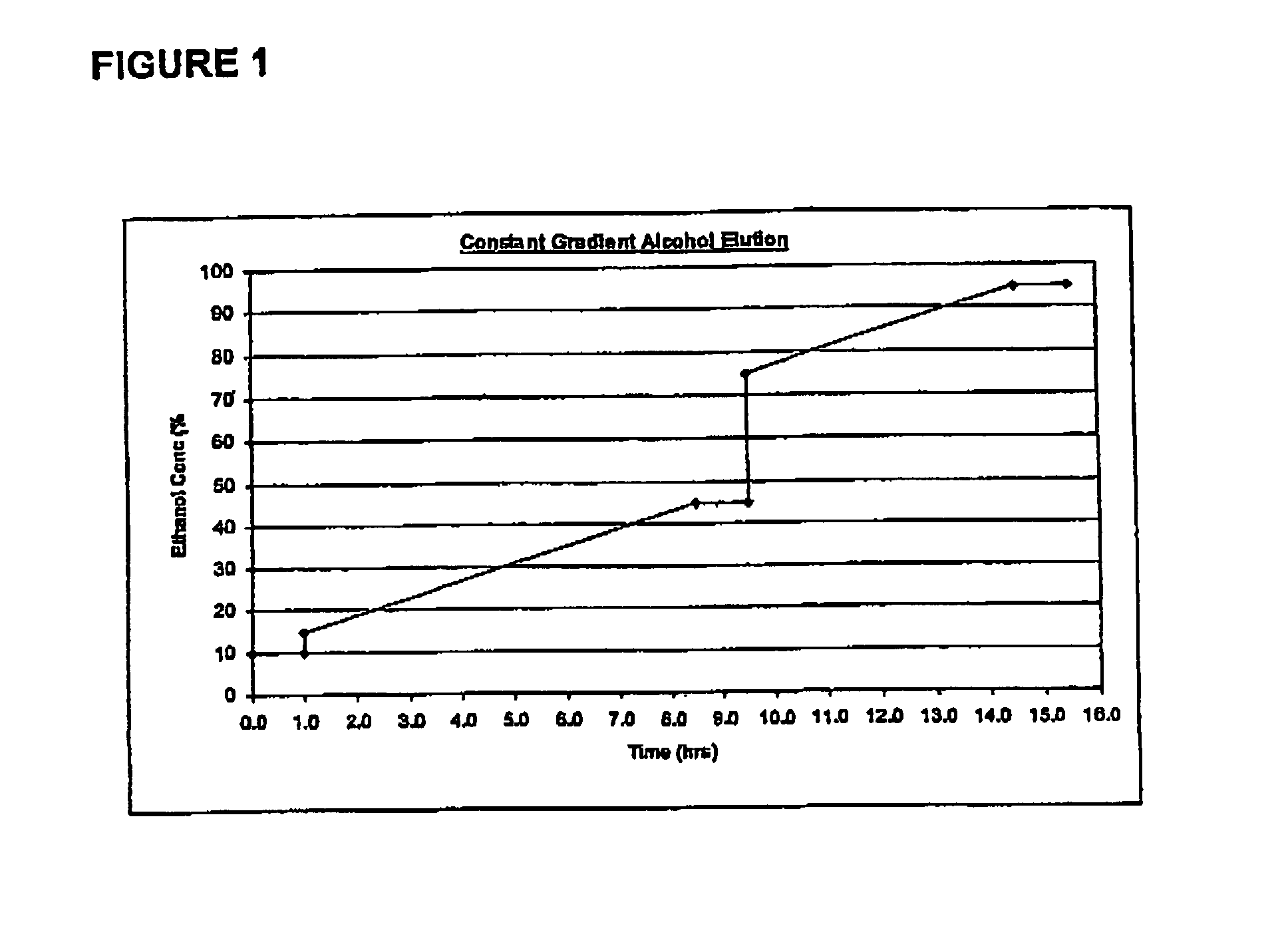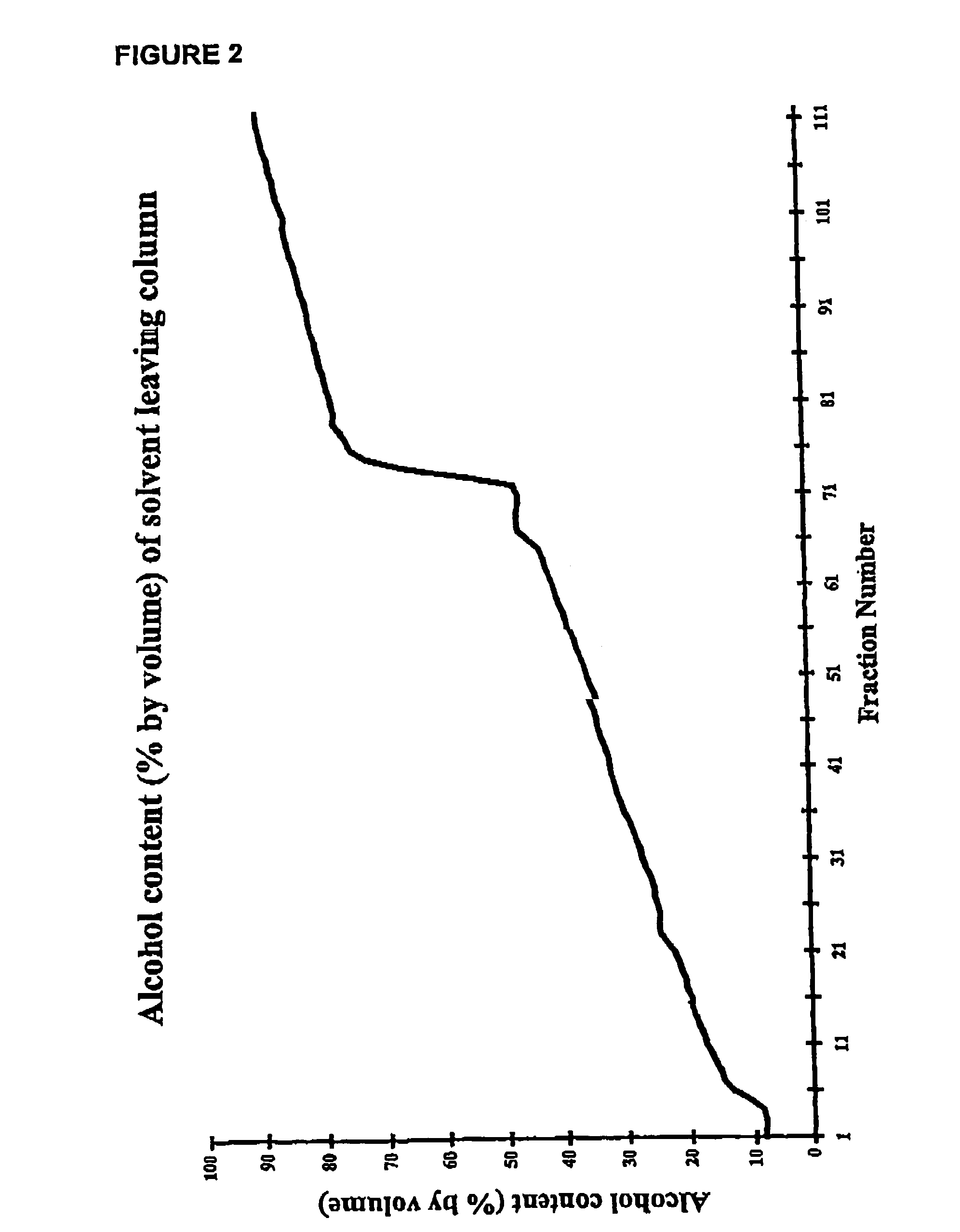Process for selectivity extracting bioactive components
- Summary
- Abstract
- Description
- Claims
- Application Information
AI Technical Summary
Benefits of technology
Problems solved by technology
Method used
Image
Examples
example
[0066]The following example illustrates the present invention in further detail, it being understood, however, that this example should by no means be construed as defining the scope of the invention
[0067]Orange peel was obtained and shaved using suitable shaving equipment. The shavings were then stored in 200 litre drums and stored at −18° C. for two days. The drums were then stored at 5° C. for a further two days in preparation for the extraction.
[0068]The shavings were sliced in a slicer with a 4 mm gap. Sliced pieces were then fed into a counter current diffusion extractor at a rate of 1.2 kg per 5 minutes, and extracted with hot water. The juice generated was pumped via a heat exchanger to 60 litre tanks. The resulting juice was at an approximate temperature of 25° C. Sixty grams of citric acid were then added to the base of each empty juice tank to provide approximately 1 gram of citric acid litre of juice. The addition of citric acid ensured a low pH level ensuring that the p...
PUM
 Login to View More
Login to View More Abstract
Description
Claims
Application Information
 Login to View More
Login to View More - R&D
- Intellectual Property
- Life Sciences
- Materials
- Tech Scout
- Unparalleled Data Quality
- Higher Quality Content
- 60% Fewer Hallucinations
Browse by: Latest US Patents, China's latest patents, Technical Efficacy Thesaurus, Application Domain, Technology Topic, Popular Technical Reports.
© 2025 PatSnap. All rights reserved.Legal|Privacy policy|Modern Slavery Act Transparency Statement|Sitemap|About US| Contact US: help@patsnap.com



